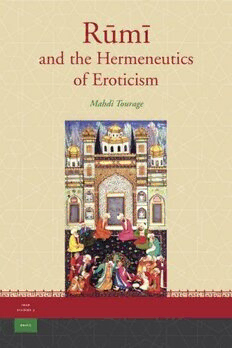
Rūmī and the Hermeneutics of Eroticism PDF
275 Pages·2007·2.942 MB·English
Most books are stored in the elastic cloud where traffic is expensive. For this reason, we have a limit on daily download.
Preview Rūmī and the Hermeneutics of Eroticism
Description:
This is the first systematic examination of the esoteric significance of the bawdy tales and explicit sexual passages present in Rūmī’s (d. 1273) Mathnawī, a masterpiece of medieval Perso-Islamic mystical literature and theosophic teachings. Using the relevant features of postmodern theories as strategic conceptual tools, and drawing on the recent interpretations of medieval kabbalistic texts, it is a fascinating examination of the link between the dynamics of eroticism and esotericism operative in Rūmī’s Mathnawī. In some of these bawdy tales, the phallus is used as an esoteric symbol. The book concludes that these tales are used primarily to communicate esoteric secrets, particularly when this communication is contemplated along gender lines, mediated through erotic imagery, or expressed in sexual terms.
See more
The list of books you might like
Most books are stored in the elastic cloud where traffic is expensive. For this reason, we have a limit on daily download.
